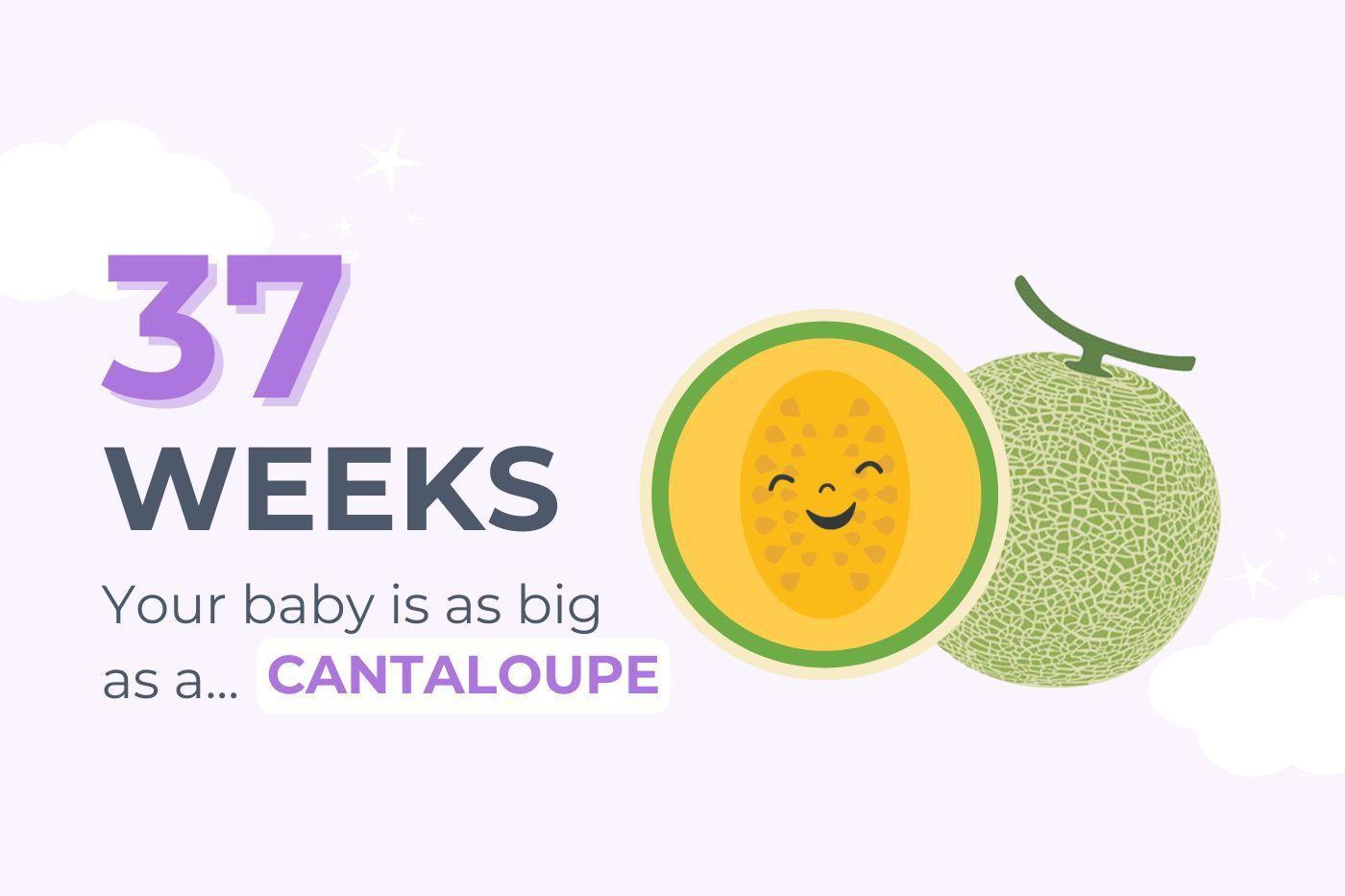PREGNANCY
37 Weeks Pregnant: ‘False’ Labour vs. Braxton Hicks
At this point your baby's lungs are ready to breathe air!

Written by
Dr. Harvey Karp

SHARE THIS ARTICLE
PARENT PICKS
Bestsellers
PREGNANCY

Written by
Dr. Harvey Karp

SHARE THIS ARTICLE
Bestsellers
Smiling at the thought of cuddling your baby in your arms very soon? Your little one may already be smiling, too! Their facial muscles are fully developed, and they’re practising tiny grins and expressions as they prepare for their grand debut.
Of course, these early smiles don’t really mean anything just yet—but within 8 to 12 weeks of being born, you’ll be able to coax your bub into smiling with delight. ([Read more about your baby’s first smile!])
By 37 weeks, your baby’s lungs are fully ready to breathe air. The delicate air sacs are coated with surfactant, a miraculous substance that prevents them from collapsing every time your baby exhales. (Babies born early may need a synthetic version to help keep their lungs open.)
Your baby’s grip is strong enough now to wrap around your finger—and even briefly support their body weight if you gently pull them to a sitting position. This grasp reflex is one of the checks your midwife or paediatrician will do at your baby’s very first visit, along with sucking and rooting reflexes.
Your baby is about the size of a rockmelon (cantaloupe).
At 37 weeks, you’re around 9 months pregnant.
Congratulations—you’ve made it! If your baby is born this week, they’re considered “early full term.” (Before this week, they’d still be classed as premature.) Full term is between 39 and 41 weeks, while 42 weeks and beyond is considered post-term.
If this is your first baby, there’s a good chance they’ll arrive a little late. In fact, the average first pregnancy lasts 41 weeks and one day. Only around 5% of babies actually arrive on their due date—which should probably be called a “due guess”! Of course, that’s little comfort if you’re fielding a flood of “any news?” messages from friends and family.
Most midwives and doctors will recommend induction if you go beyond 42 weeks, and some prefer not to let pregnancies go past 41 weeks. If you reach that stage, you’ll likely be monitored more closely with non-stress tests and biophysical profiles, which check your baby’s movement, heart rate, and amniotic fluid levels.
The reason for extra caution is that after 42 weeks, the placenta may start to deteriorate, amniotic fluid levels can drop, and babies can grow quite large. Chat with your midwife or doctor about their approach to induction and how far past your due date they’ll let you go. According to a Cochrane review, induction after very prolonged pregnancies does offer some benefits—but the risks of waiting are generally small.
Your baby’s hiccups in the womb are part of their practice runs for breathing. Babies receive oxygen through the umbilical cord while inside, but by “breathing” amniotic fluid in and out, they’re training their diaphragm for the big switch at birth.
It’s a great thing about being pregnant—you don’t need excuses to wee or to eat.
— Angelina Jolie
Disclaimer: The information on our site is NOT medical advice for any specific person or condition. It is only meant as general information. If you have any medical questions and concerns about your child or yourself, please contact your health provider. Breastmilk is the best source of nutrition for babies. It is important that, in preparation for and during breastfeeding, mothers eat a healthy, balanced diet. Combined breast- and bottle-feeding in the first weeks of life may reduce the supply of a mother's breastmilk and reversing the decision not to breastfeed is difficult. If you do decide to use infant formula, you should follow instructions carefully.